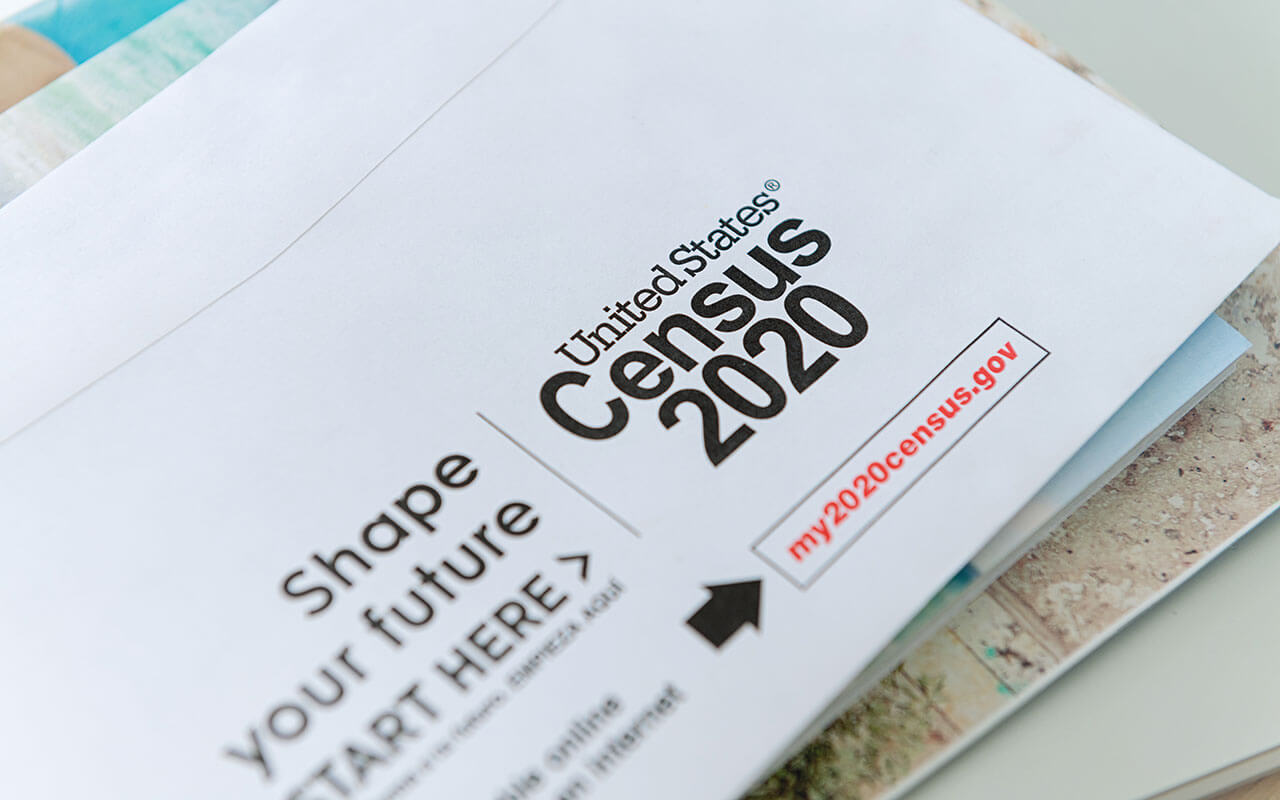U.S. Census Day 2020: The history and the challenges amid the coronavirus recession

Overview
April Fool’s Day usually marks a day filled with well-planned pranks and practical jokes, but this year’s April 1 commemorates a very special occasion: the 2020 Census Day. Census Day in the United States is no joke. It serves as the point-in-time reference of our nation’s population for the next decade. Households are expected to complete their census forms by this date—those who don’t can expect a knock on their door from a census-taker.
The 2020 census, however, is taking place amid a rapidly spreading coronavirus pandemic. This issue brief examines the importance of the centennial census-taking to our republic and our economy, and then presents four unique challenges facing the 2020 census and possible solutions.
Download FileU.S. Census Day 2020: The history and the challenges amid the coronavirus recession
The history of the U.S. census
Censuses have proven to be a valuable tool for U.S. policymaking. The 2020 census determines how federal resources are allocated to states and localities over the next decade and is used to map voting districts. The first census administered in 1790 only fulfilled the constitutional requirement of collecting population data and nothing more. The purpose of this rudimentary dataset was to set voting district boundaries based on communities’ population size. Over subsequent decades, the federal government saw the census as an opportunity to learn about the nation’s economic, educational, housing, and demographic status.
Since the creation of the Census Bureau within the U.S. Department of Commerce, the federal government has been able to administer myriad national surveys in order to expand policymakers’ knowledge of everyone living in the United States, including economic status, educational attainment, housing affordability, and even healthcare accessibility. Surveys such as as the American Community Survey or the Survey of Income and Program Participation collect such data and provide policymakers with information to help allocate resources to schools, infrastructure building, and other public safety net programs. Businesses also use U.S. census data to make decisions about whether, how, and where to expand operations.
Using the decennial U.S. census with supplementary surveys such as the ACS and Economic Census, researchers have been able to track growing income inequality by age, race, and region, allowing policymakers to target funding support to groups that suffer from systemic inequality. The Census Bureau also began releasing the annual Income and Poverty Report in 2014, which outlines new poverty rates and median household income measurements. (See Figure 1.)
Figure 1

The challenges facing the 2020 census and possible solutions
This year is the first time the census is being primarily administered online. While respondents can fill it out via paper form or over the phone, growing accessibility to broadband internet means that the Census Bureau expects the majority of entries to be completed online. As the agency rolls out survey invitations across the country, it faces many challenges when trying to accurately count our nation’s population, especially as it deals with the rapidly spreading coronavirus pandemic.
As states institute social distancing measures and shelter-in-place orders, the Census Bureau announced that it will do its part in curbing the spread of the virus by suspending field operations until April 15. Relying on the use of online forms, census workers will call residences and administer an over-the-phone questionnaire if their online forms weren’t completed by April 1. This allows census-takers to continue working while keeping their distance.
A second problem complicating the accurate collection of data is the widespread closure of colleges and universities. As schools have closed down classrooms and dorms, thousands of students are unable to access their student housing accommodations and, as a result, will not be able to access their survey invitations. Nonresponse follow-up calls will take place between May 13 and July 31, but if colleges are closed throughout the spring and summer sessions, more than 4 million college students will either be undercounted or incorrectly counted at their family residence. University cities rely on students being counted in the population because they account for a significant percentage of the area’s population, and better funding for programs such as roads and highway planning, food assistance, and Pell grants can attract more students to thriving cities.
A possible solution to this concern is to extend the nonresponse follow-up calls into the fall, so that returning students will have the chance to be included in this decade’s population count.
The third issue the Census Bureau faces comes from the closure of public institutions such as libraries. According to a 2010 survey, “a public library is located within five miles of 99 percent of the hard-to-count Census tracts identified with the lowest response rates in 2010—and 79 percent of the time, a library is within a single mile.” Many households depend on libraries for reliable internet access, and these closures may make it difficult for them to participate.
In 2010, more than 6,000 public libraries hosted Census Bureau outreach sites, where they educated respondents about the importance of filling out the form and helped administer it on-site. This puts pressure on the agency to emphasize nonresponse follow-up calls throughout the year.
Conclusion
As the United States continues to observe social distancing, take 10 minutes out of your day to fill out your census form. This one simple act has the power to fund large-scale infrastructure and economic programs, will decide how many congressional representatives your state receives, and will create the foundation of state- and local-level policymaking for the next decade.







